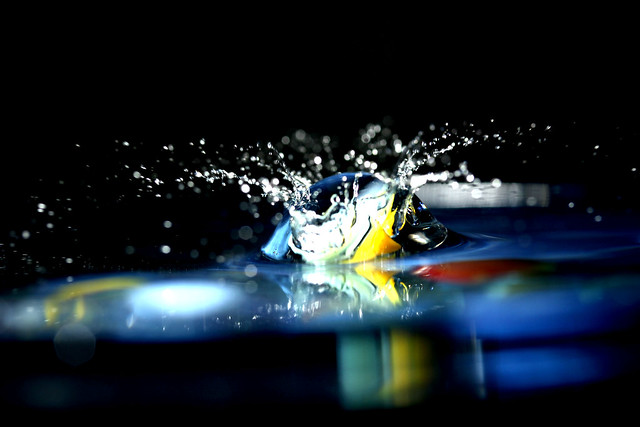 A couple weeks ago I decided I would give it a try. First I bought a little electret microphone kit for 11€ (the one on the left). A bit expensive, but probably cheaper than buying the components separately. I also bought a 5V relay to trigger the camera. I built a simple circuit that would take the amplified microphone output and feed it to a transistor that would trigger a relay.
A couple weeks ago I decided I would give it a try. First I bought a little electret microphone kit for 11€ (the one on the left). A bit expensive, but probably cheaper than buying the components separately. I also bought a 5V relay to trigger the camera. I built a simple circuit that would take the amplified microphone output and feed it to a transistor that would trigger a relay.I'm sure it's not a good design but it worked:

It was cool to see it working, but it wasn't fast enough! First of all, I'm taking the picture exactly after getting a sound, so I'm always getting a picture after the impact. I had everything on manual, so the camera would shoot as soon as possible. This is a picture of my hand knocking on the table:

I had enough time to get my hand out of the picture! I did a little research, and discovered that even if I'm doing everything on manual, the camera always has a long delay.
For the Canon 500D, there's a delay of about 110 milliseconds, which adds to the delay of the circuit itself. Removing the relay didn't do much, since it only takes about half a millisecond to change its state.
110 milliseconds is a very long time at high speeds. Though you can probably do much faster, let's say you can wave your hand at 1 meter per second. In 100 milliseconds you're moving 10cm!
I decided to trigger the flash instead of the camera. Still, I was getting some delay. Maybe around 20 milliseconds, but still too much:

I realised I needed to make a sensor that predicted the moment of impact. Sound wouldn't work.
So I started thinking about light.
Continue reading in part 2.


No hay comentarios:
Publicar un comentario